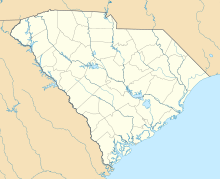
The 54th Massachusetts Infantry Regiment was an infantry regiment that saw extensive service in the Union Army during the American Civil War. The unit was the second African-American regiment, following the 1st Kansas Colored Volunteer Infantry Regiment, organized in the Northern states during the Civil War. Authorized by the Emancipation Proclamation, the regiment consisted of African-American enlisted men commanded by white officers. The 54th Massachusetts was a major force in the pioneering of African American civil war regiments, with 150 all-black regiments being raised after the raising of the 54th Massachusetts.

United States Colored Troops (USCT) were Union Army regiments during the American Civil War that primarily comprised African Americans, with soldiers from other ethnic groups also serving in USCT units. Established in response to a demand for more units from Union Army commanders, USCT regiments, which numbered 175 in total by the end of the war in 1865, constituted about one-tenth of the manpower of the army, according to historian Kelly Mezurek, author of For Their Own Cause: The 27th United States Colored Troops. "They served in infantry, artillery, and cavalry." Approximately 20 percent of USCT soldiers were killed in action or died of disease and other causes, a rate about 35 percent higher than that of white Union troops. Numerous USCT soldiers fought with distinction, with 16 receiving the Medal of Honor. The USCT regiments were precursors to the Buffalo Soldier units which fought in the American Indian Wars.

Edward "Ned" Needles Hallowell was an officer in the Union Army in the duration of the American Civil War, commanding the 54th Massachusetts Volunteer Infantry following the death of Colonel Robert Gould Shaw at the Second Battle of Fort Wagner in 1863.

The Battle of Dranesville was a small battle during the American Civil War that took place between Confederate forces under Brigadier General J. E. B. Stuart and Union forces under Brigadier General Edward O. C. Ord on December 20, 1861, in Fairfax County, Virginia, as part of Major General George B. McClellan's operations in northern Virginia. The two forces on similar winter time patrols encountered and engaged one another in the crossroads village of Dranesville. The battle resulted in a Union victory.

The Second Battle of Fort Wagner, also known as the Second Assault on Morris Island or the Battle of Fort Wagner, Morris Island, was fought on July 18, 1863, during the American Civil War. Union Army troops commanded by Brig. Gen. Quincy Gillmore launched an unsuccessful assault on the Confederate fortress of Fort Wagner, which protected Morris Island, south of Charleston Harbor. The battle occurred one week after the First Battle of Fort Wagner. Although it was a Confederate victory, the valor of the Black Union soldiers was widely praised. This had long-term strategic benefits by encouraging more African-Americans to enlist, allowing the Union to utilize a manpower resource that the Confederacy could not match for the remainder of the war.

The Battle of Secessionville was fought on June 16, 1862, during the American Civil War. Confederate forces defeated the Union's only attempt to capture Charleston, South Carolina, by land. It is noted for the court martial of the Union brigadier general Henry Benham for trying to take James Island, which was against the orders given.

The Battle of Hatcher's Run took place from February 5 to 7, 1865, during the American Civil War. Fighting occurred at several locations in Dinwiddie County, Virginia, southwest of Petersburg. The battle was part of the Petersburg Campaign and constituted Union Commander-in-Chief Lt. Gen.Ulysses S. Grant's 8th Offensive. On February 5, Grant and his Army of the Potomac commander Maj. Gen. George G. Meade sent Maj. Gen. David McMurtrie Gregg’s cavalry division to disrupt a Confederate supply line along Boydton Plank Road around Dinwiddie Court House. However, Gregg discovered that the Confederates had largely abandoned the supply route. Later that day, under Gen. Robert E. Lee’s guidance, Confederate forces from Maj. Gen. John B. Gordon’s Corps and Lt. Gen. A. P. Hill’s Corps attacked one of the Union infantry forces sent to support the cavalry raid. The Federals beat back three Confederate attacks near Armstrong’s Mill. Concerned about further attacks the following day, Grant and Meade consolidated their forces around Hatcher’s Run.

The 28th Massachusetts Infantry regiment was the second primarily Irish American volunteer infantry regiment recruited in Massachusetts for service in the American Civil War. The regiment's motto was Faugh a Ballagh
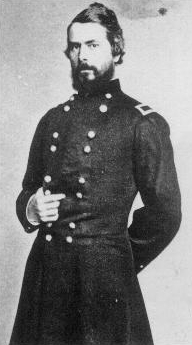
Truman Seymour was a career soldier and an accomplished painter. He served in the Union Army during the American Civil War, rising to the rank of major general. He was present at the Battle of Fort Sumter. He commanded the Union troops at the Battle of Olustee, the only major Civil War battle fought in Florida.
The Battle of Honey Hill was the third battle of Sherman's March to the Sea, fought November 30, 1864, during the American Civil War. It did not involve Major General William T. Sherman's main force, marching from Atlanta to Savannah, Georgia, but was a failed Union Army expedition under Brig. Gen. John P. Hatch that attempted to cut off the Charleston and Savannah Railroad in support of Sherman's projected arrival in Savannah.
The Malaya Command was a formation of the British Army formed in the 1920s for the coordination of the defences of British Malaya, which comprised the Straits Settlements, the Federated Malay States and the Unfederated Malay States. It consisted mainly of small garrison forces in Kuala Lumpur, Penang, Taiping, Seremban and Singapore.
The 102nd United States Colored Infantry was an African American infantry regiment of United States Colored Troops in the Union Army during the American Civil War. The unit was organized as the 1st Michigan Colored Volunteer Infantry Regiment before being redesignated as the 102nd Regiment USCT.
The 1865 battle of Boykin's Mill was the site of the last Union officer killed in action during the American Civil War. It was also the location of the final battle on South Carolina soil.
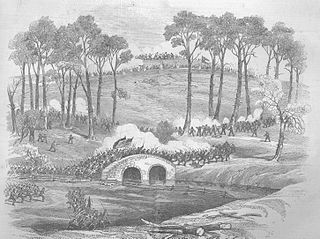
The 21st Massachusetts Infantry Regiment was an infantry regiment in the Union Army during the American Civil War. It was organized in Worcester, Massachusetts and mustered into service on August 23, 1861.
Hispanics in the American Civil War fought on both the Union and Confederate sides of the conflict. Not all the Hispanics who fought in the American Civil War were "Hispanic Americans" — in other words citizens of the United States. Many of them were Spanish subjects or nationals from countries in the Caribbean, Central and South America. Some were born in what later became a U.S. territory and therefore did not have the right to U.S. citizenship. It is estimated that approximately 3,500 Hispanics, mostly Mexican-Americans, Puerto Ricans and Cubans living in the United States joined the war: 2,500 for the Confederacy and 1,000 for the Union. This number increased to 10,000 by the end of the war.
The 154th Regiment, Tennessee Infantry was an infantry regiment from Tennessee that served with the Confederate States Army in the American Civil War. Raised originally in 1842 as the 154th Tennessee Militia it sought to retain its number and was as such also known as 154th (Senior) Tennessee Infantry . Consolidating with the 13th Tennessee Infantry Regiment in March 1863 it was known as 13th-154th Tennessee Infantry Regiment; and had a number of temporary field consolidations until it was finally merged into the 2nd Consolidated Tennessee Infantry on April 9, 1865. The regiment surrendered with the remnants of the Army of Tennessee at Bennett Place on April 26, 1865.
The 157th Brigade was an infantry brigade of the British Army. The brigade fought in both the First and the Second World Wars, assigned to 52nd (Lowland) Infantry Division.

The Second Battle of Pocotaligo, or Battle of Pocotaligo Bridge, or Battle of Yemassee, often referred to as simply the Battle of Pocotaligo, took place during the American Civil War on October 22, 1862 near Yemassee, South Carolina.
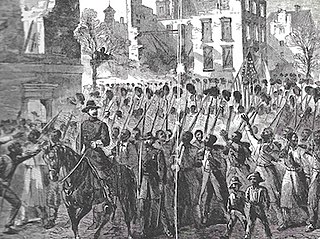
The 55th Massachusetts Infantry Regiment was the sister regiment of the renowned Massachusetts 54th Volunteers during the latter half of the American Civil War, formed because of the overflow of volunteer enlistees to the 54th Massachusetts.
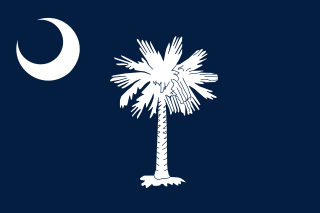
The 2nd South Carolina Infantry Regiment, also known as 2nd Palmetto Regiment, was a Confederate States Army regiment in the American Civil War.
